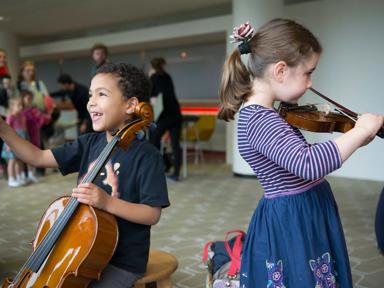5 things to know about Zohra Opoku
Until February 2021, you can see a self-portrait by Zohra Opoku on the Hayward Gallery billboard. This self-portrait, Rhododendron (2015), is part of a series inspired by West African masquerade and the beauty of the natural world. We’ve collated five things to know about the artist behind this striking portrait.

She was born and brought up in the former German Democratic Republic, and is now based in Accra, Ghana
As a teenager growing up behind the iron curtain, Zohra Opoku escaped what she has described as ‘the grey reality of the GDR’ by making her own clothes. One of her earliest creations was a colourful winter coat made from scraps of denim and neon-yellow fabric.
She went on to study fashion, and although she now works with photography, sculpture and installation, textiles are still hugely important to her
In fact, they are ‘fundamental’ to her work. And although she decided against becoming a fashion designer herself, it’s still a big influence on her work: ‘Fashion for me has such a transformative power. It is one of the most accessible forms of self-identification’, she explains.
Much of her work explores identity – personal, political, cultural – as well as the idea of home and belonging
Opoku identifies as ‘German, Afro-German, African, Ghanaian, Obroni [‘foreigner’ in the Twi language] and Asante’. In her work, she explores the often complex question of identity – her own and others’ – through textiles. The artist has featured traditional kente cloth in her collages, while her series of cyanotypes entitled Queen Mothers (2016) were printed directly onto thick white bedsheets owned by her grandma. ‘I enjoy working with something that’s flexible, that’s alive, that tells stories by its history of use’, she comments.

She’s also interested in disguise, concealment, and the ways in which we attempt to blend in, or adapt to new environments
In her series of self-portraits, of which Rhododendron (2015) is one, the artist captures herself head-on, often looking squarely at the camera – but with her features and clothing partially concealed by leaves, branches and long grasses. Despite or because of this, these self-portraits are disarmingly intimate. Speaking of the way in which elements of the natural world act as a kind of mask or disguise in these works, not just a backdrop, Opoku comments: ‘I like having the environment knitted into the image and not just making a frame around me’.
For Zohra Opoku, nature is both a ‘home’ and a ‘hiding place’
Wherever she is in the world, nature gives Opoku a sense of home. ‘My mom was always gardening. My father was a gardener himself and very interested in farming. That influence made nature a safe place for me’. For the artist, indigenous plants – plants native to a particular place – provide a useful allegory for thinking about identity and belonging. In the self-portrait on display in front of Hayward Gallery, she stands under the leafy branches of a rhododendron bush, finding safety in concealment.
Zohra Opoku (b. 1976) lives and works in Accra, Ghana.
Read about more about her self-portrait, Rhododendron (2015)
